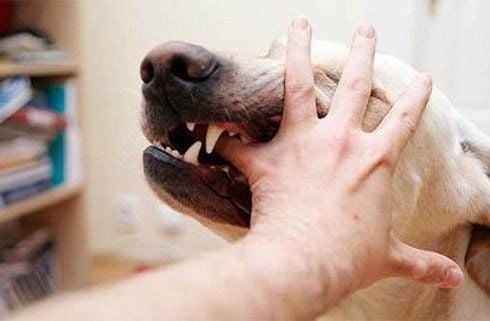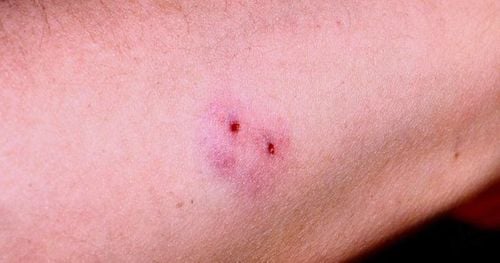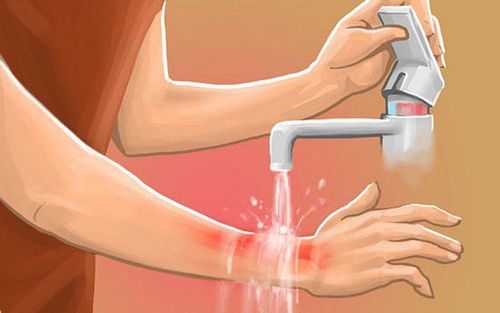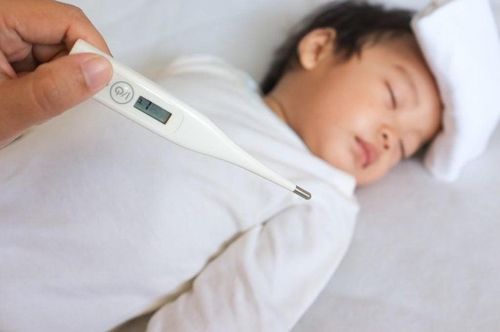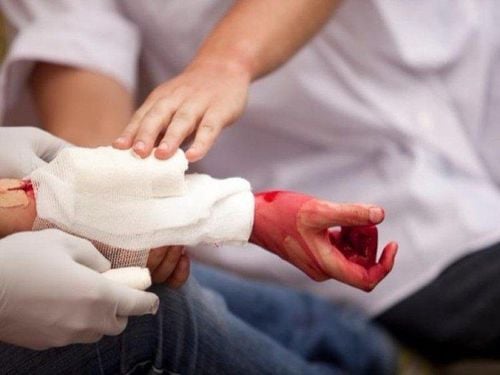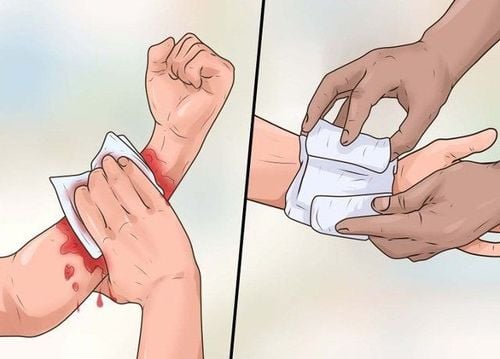This is an automatically translated article.
The article was written by Specialist Doctor II Nguyen Xuan Ninh - Emergency Doctor, Emergency Department - Vinmec Central Park International General Hospital.Bleeding can be outside the body or it can be inside the body (also called internal bleeding). Bleeding can quickly become life-threatening if left unchecked.
Severe bleeding can occur when a large blood vessel is cut or torn. When this happens, the person can lose a large amount of blood in just a few minutes. Minor bleeding occurs from small cuts. Most bleeding wounds will stop when applied pressure. It is important to stay calm because many people panic when they see a bleeding wound.
1. Compression and bandages to stop bleeding
Pressure : Use gauze, clean cloth - directly press on the wound to stop bleeding Bandage : Use a cloth or elastic bandage to protect or wrap around the injured body part. Using this dressing can also help keep pressure on the wound. When needed, you can place several gauze pads over the wound and use a bandage to help apply pressure.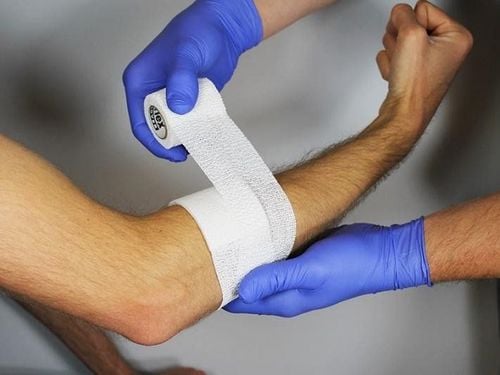
2. When to call an ambulance for a bleeding wound?
Call or have someone call 911 if:You see a lot of bleeding You can't stop the bleeding You feel signs of shock You suspect a head, neck, or spine injury You don't know what to do
3. Steps to control bleeding with direct compression and dressings
Make sure the scene is safe Call someone to get a first aid kit Wear personal protective equipment (gloves, goggles) If possible, have the casualty press directly on the wound while you are wearing protective gear individual Remove compression gauze from the first aid bag. Place several gauze pads on the bleeding area and apply pressure directly on the gauze. Use the flat part of your fingers or the palm of your hand to apply pressure (Figure 2). If you don't have gauze, you can apply pressure directly with your gloved hand. If it's still bleeding, you need to put more gauze on the bleeding area and apply more pressure. Be careful not to remove the gauze that has been put in as it may cause more bleeding. Keep pressure on the wound until it stops bleeding When the wound has stopped bleeding or when you can no longer apply pressure on the wound. Use a bandage to wrap over the compress, wrap firmly to keep the gauze in place. For small wounds, you can wash the wound with soap and water. Then, compress the wound with gauze
4. Using garo
If your arm or leg has a serious bleeding wound and you can't stop the bleeding with pressure, you can use a garo. You should call for emergency help (eg, call 911) and get an automatic electric shock device (AED) (if available) because uncontrolled bleeding can cause other complications.First aid bag should be available. Garo consists of a belt to wrap around the injured arm and leg and a straight shaft resembling a stick. This straight shaft is used to tighten the garo. If done correctly, garo can help stop bleeding.
If you put the garo correctly, it will cause pain when the bleeding stops. Once you have used the garo, remember to record the time and remember to hand it over to the medical staff.
4.1 Steps to take with a dedicated Garage Securing a safe scene Call 911, get a first aid kit, and get an AED Wear personal protective equipment Place the garage about 2 inches above the wound (5cm) if possible Tighten the garo until the bleeding stops Record the time to start applying the garo Once you have placed the garo and the bleeding has stopped. Leave the garage until a paramedic or person with more advanced first aid training is available and hand it over to them
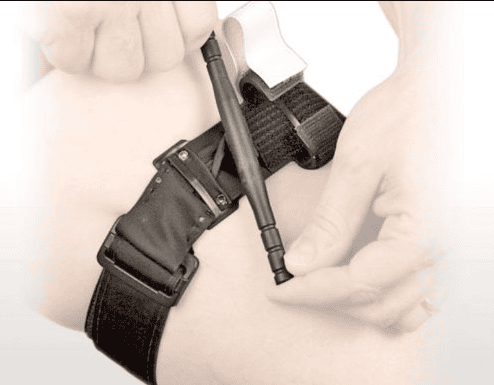
Make sure the scene is safe Call 911, get a first aid kit, and get an AED Wear personal protective equipment Fold a piece of cloth or tape to make a long object and at least 1 in (about 2.5 cm) wide. Wrap the bandage (cloth) about 2 in (5cm) above the wound if possible. Tie the ends of the dressing around a stick (or similar small hand tool) ) Rotate the stick to tighten the bandage, squeeze until the wound stops bleeding Fix the stick to hold the garo tight enough Record the time to start making the garo Once you've put the garo on and the bleeding has stopped. Leave the garage until a paramedic or person with more advanced first aid training is available and hand it over to them
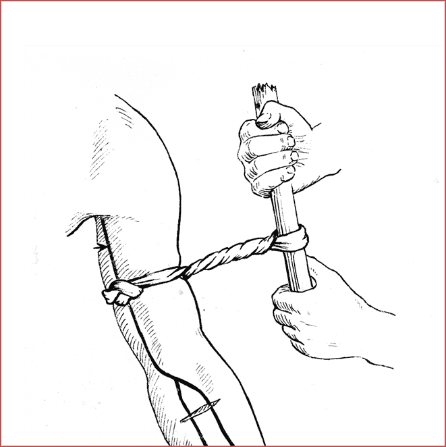
Please dial HOTLINE for more information or register for an appointment HERE. Download MyVinmec app to make appointments faster and to manage your bookings easily.
Article referenced source: First aid - American Heart Association




